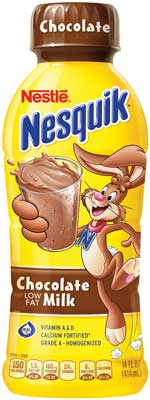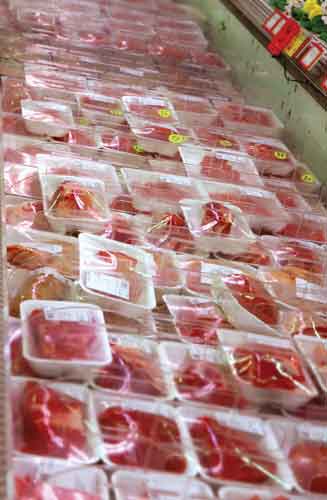Extended Shelf Life: Flying Under the Radar
PACKAGING
Extended shelf life (ESL) has existed since the very beginning of food science and technology under a variety of designations. The basis for preservation of all chilled foods, ESL is gradually extending its reach and now encompasses nearly half of all food distribution. Of all the technologies that are taught in universities and are the subject of peerreview research publications, ESL is noteworthy for its virtual absence. It is amazing that this fundamental adjunct to food packaging has been virtually invisible for so long.
 Rationale for Shelf Life
Rationale for Shelf Life
Despite recent calls for local farms to be the ultimate sources of food for Americans, food preservation remains foundational. Shelf life has been and will remain the objective of the food supply chain. And prolonging shelf life is the mandate for all food and food packaging technologists to deliver safe, quality food to consumers.
Mankind has been extending shelf life for centuries with the use of amphora, ice, sun-drying, and fermentation. Napoleon’s cry for shelf life was the inspiration for Nicolas Appert’s canning technique 200 years ago. A century later Clarence Birdseye observed that the Inuits were applying nature’s temperature control to provide themselves with food year round. And food science’s intensive research intoionizing radiation for the military, chronically ill, and even space exploration is a fundamental example of getting more shelf life.
The latter years of the last century were peppered with new incentives for shelf life. Discerning, affluent consumers expressed desires for food products that were not only attractive and flavorful but also closer to their perception of fresh. Safety became axiomatic and convenience was added to the list of shelf-life possibilities. Processing and packaging were the means toward meaningful ends: major increases in convenience and reductions in consumer time. People are now gravitating toward minimally processed ESL food products in homes and foodservice outlets.
Minimally Processed Foods
While food processing is being maligned by misinformed consumers, media outlets, and advocacy groups, the food and food packaging industries have been quietly making developments in the direction of satisfying the eaters of America. Greater emphasis is being placed on integrating processing and packaging with temperature and distribution control to deliver better foods that meet diverse demands.
Processing can translate into many different implementations engineered to minimize change in food converted to edible products. Processing must alter food from raw and inedible into bread, cake, beverages, pasta, sauce, and many other forms enjoyed every day. Minimal processing is the science and technology of rendering the desirable change while hardly disrupting a food’s basic attributes. This might include cleaning, size reduction, peeling, removal of ubiquitous deteriorative vectors, reconfiguration for enhanced flavor and masticatory properties, retention of nutritional entities, convenience, blending and mixing, turning cacao into chocolate, and creating cheese from milk or coffee from beans.
Food Preservation
Feeding a population is not achieved by waiting for manna to descend from heaven. Raw agricultural materials from plants, animals, or water contain microbiological or enzymatic agents to return them to their origins. Food processors and packagers are dedicated to retarding undesirable changes and enhancing food to present consumers with a pleasant and healthy array of products. Enabling more than 300 million Americans—many of whom may not have immediate access to backyard gardens or farmers markets— to experience delicious and safe food products requires the integration of raw materials with a series of processing, packaging, and distribution operations. More than 30,000 supermarkets and 150,000 convenience stores, drug stores, and ethnic groceries; countless vending machines; and nearly one million foodservice retailers rely on this system.
The nemesis in this choreographed exercise is time—the longer the time period, the greater the probability of one or more deteriorative vectors to function. The objective is shelf life—that time during which food products, usually processed in some manner, retain their safe quality. The longer that period is, the less loss during distribution. Even though food waste in America is at its lowest in world history, there is room for improvement. More than 30% of raw and processed food is lost from farm to table, which indicates a monumental gap that could be closed.
Nevertheless, technology and sense are being used successfully to reduce waste and prolong shelf life. At the same time, most American consumers have access to the broadest and safest (and most economical) food supply in world history. ESL has altered the food chain in a spectacular fashion, vastly increasing the supply of food products transitioning through the chilled chain so that the highly desired level of freshness is now prevalent in the retail scene.
--- PAGE BREAK ---
 Preservation Methods
Preservation Methods
The merit of refrigeration as a processing/ preservation step is obvious: it provides the least change in foods from fresh off the farm. At the same time, temperature reduction to the edge of freezing is the least effective of the multitude of food product preservation technologies available. Reduction of temperature should first incorporate the knowledge that the Arrenhius theory reigns: the lower the temperature, the longer the shelf life—with a few exceptions. Reported measurements of food product temperature in distribution indicate that the industry has not yet reached optimum conditions.
Coupling minimal heat (i.e., pasteurization) with chilled channels has provided more than two weeks of shelf life for milk and longer for dairy derivatives such as cottage cheese, sour cream, yogurt, and ice cream. Combining mild thermal energy with chilling extends shelf life by factors of two to ten. Some flavored milk products are heated using aseptic processing but linked with chilled distribution to achieve this result.
Prepared foods such as protein salads, side dishes, and main courses receive minimal heat treatment prior to rapid temperature reduction to near the freezing point to effect three weeks of chilled shelf life. Often the effects are further enhanced by adding reduced oxygen to barrier packaging. In the works is the application of microwave pasteurization, which is a low-heat technology, in conjunction with low-temperature distribution to achieve several weeks of shelf life.
The results from rarely applied ionizing radiation plus chilling are impressive in favor of extended shelf life. Closer to commercial reality is the employment of ultra high pressure in concert with reduced temperature pressure-assisted thermal stabilization, which is now used for products such as freshly squeezed juice. Clean room technology is here, microoxygen is on its way, and active antimicrobial packaging will soon be utilized.
Protecting food products through packaging minimizes the loss of moisture and flavor, inhibits stray microorganisms and dirt, and permits further enhancement of the preservation environment. Altering the gaseous mix surrounding food products to reduce oxygen and increase carbon dioxide and water vapor (also known as modified atmosphere) is a silent natural preservative that envelops perhaps a quarter of the food supply. Almost all red meat, most cured meats, seafood, pasta, fresh lettuce, berries, apples, and pears are preserved with this method; its functionality is inversely correlated to temperature.
Although consumers want foods that are closer to fresh, the freshness of mainstream home and foodservice products is subject to the constraints of minutes, hours, or days during which the products retain their safety and quality. Extended shelf life is the application of holistic hurdle technology: the quantitative combination of two or more technologies simultaneously or sequentially to enhance the basic result significantly. ESL combination technologies permit food suppliers to pass products through a large and complex distribution system and deliver safe, high quality food. Effective application of small doses of technology in combination has enabled the population to receive and consume their food product preferences. We have certainly made enormous strides in our quest for perfect food preservation.
 Aaron L. Brody, Ph.D., CFS,
Aaron L. Brody, Ph.D., CFS, Contributing Editor
President and CEO, Packaging/Brody Inc., Duluth, Ga.,
and Adjunct Professor, University of Georgia
[email protected]
